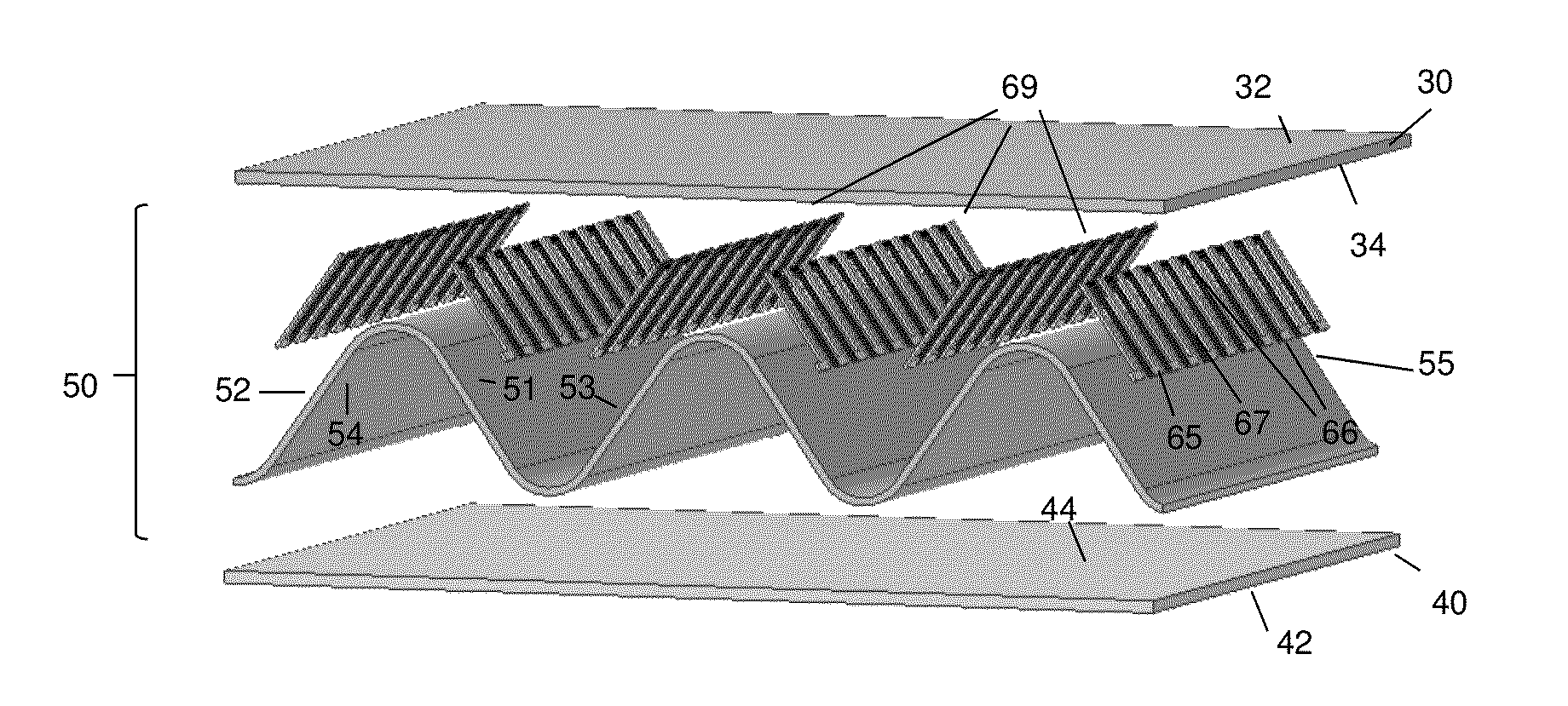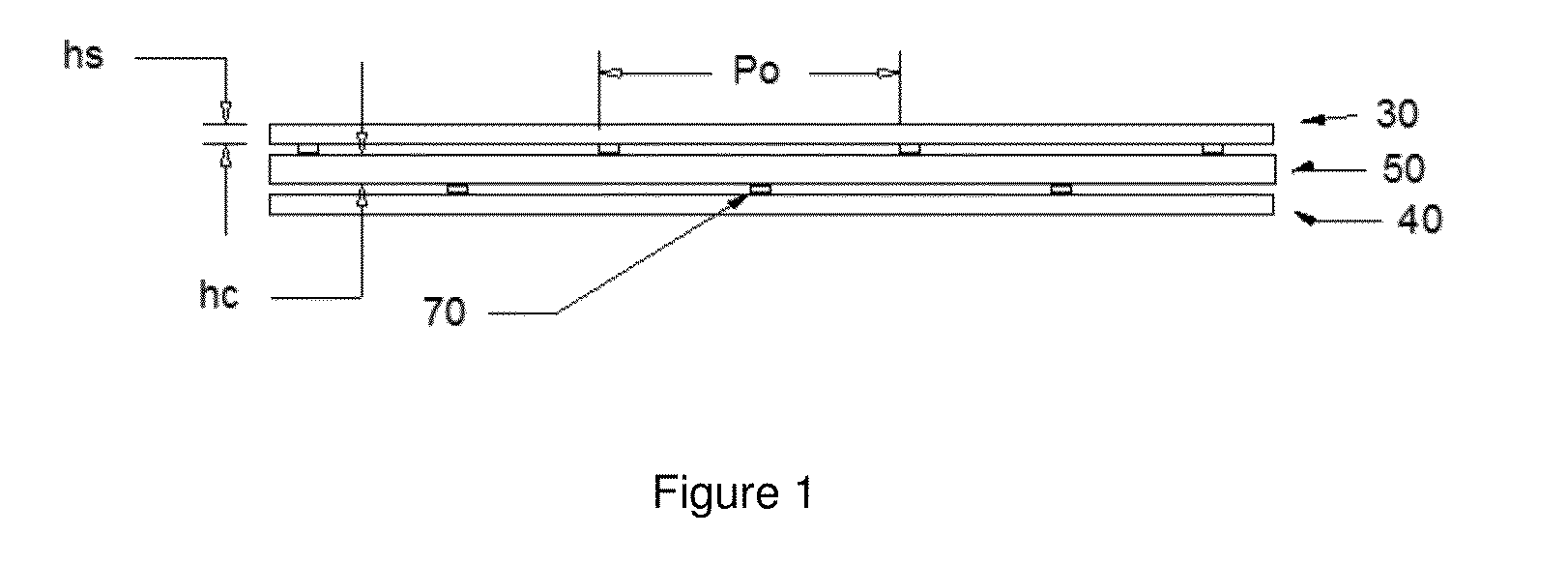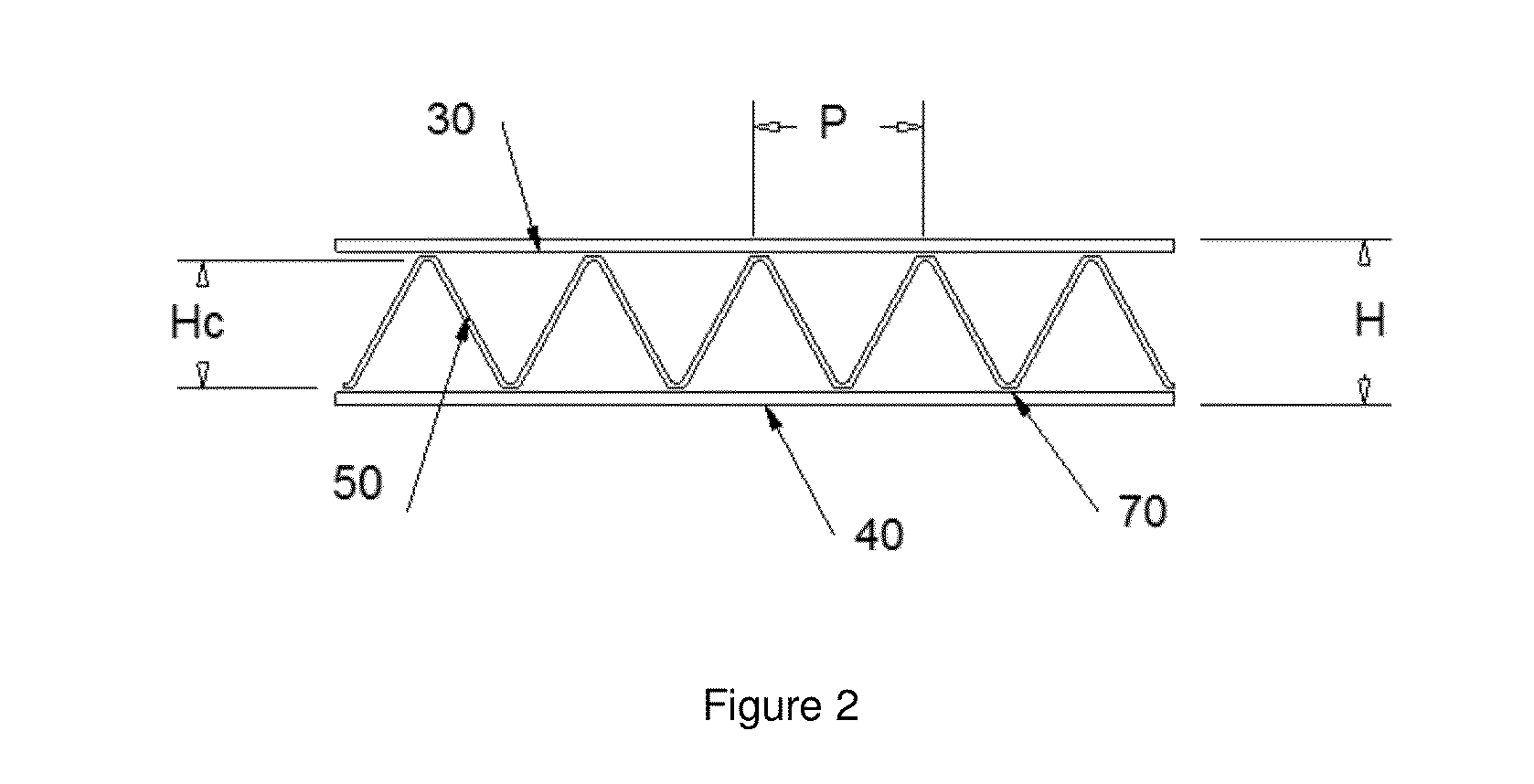Self-corrugating laminates useful in the manufacture of thermoelectric devices and corrugated structures therefrom
a technology of laminates and corrugated structures, applied in the field of laminate films, can solve the problems of labor-intensive processes, limited ability to make structural or functional plastic panels, and limited process selection and selection,
- Summary
- Abstract
- Description
- Claims
- Application Information
AI Technical Summary
Benefits of technology
Problems solved by technology
Method used
Image
Examples
examples
[0114]The following experimental methods were used to characterize the films and corrugated structures.
[0115]Shrinkage was determined by immersing a 100 mm×100 mm sample of the shrink film sample in water at 95° C. Hot water was used because copolyester shrink films (Tg=72° C.) were used for the experiments. Film was held in the bath for at least 30 seconds to ensure full shrinkage was complete. The length of the sample was then measured and the shrinkage in each direction determined by the following formula:
Percent shrinkage=(Lo−L) / Lo*100 (1)
in which L is the length after shrinkage and Lo is the initial length (100 mm). For shrink films having a Tg>100° C., hot water can no longer be used, so either hot oil or hot air is required. For these tests, the temperature of shrinkage should be at least Tg+20° C. and the sample held until full shrinkage is acquired. This is typically about 30 seconds for liquid media and 1 minute for hot air ovens.
[0116]Shrink stress was measured in a simi...
examples 1-10
Corrugated Structures with Polycarbonate Core
[0124]For these examples, a series of uniaxially stretched films were bonded to a polycarbonate film core using a UV adhesive (Dymax SC330 gel). The copolyester shrink layer comprised Eastman Embrace LV™ (Eastman Chemical Company, Kingsport, Tenn.), a material commonly used for shrink film packaging (Tg=72° C.). To make the shrink film, a cast film 0.25 mm thick was extruded to create the unoriented base material. This film was then stretched on a Bruckner laboratory film stretcher at a nominal temperature of 82° C. Stretch ratio was varied from 1.25× up to 2× which yielded films having shrinkage from about 20% up to 50% (see Table I).
[0125]Next these shrink films were cut into 1 inch (25.4 mm) wide strips and then bonded to 25.4 mm wide strips of polycarbonate (core) film using the UV curable adhesive. Small stripes of adhesive were painted onto one side of the core at fixed intervals (Po was either 19 mm, 25.4 mm or 38 mm depending on t...
examples 11-15
Corrugated Structures with Copolyester
[0129]These examples followed the same procedure as with Example 1, except that the core was made from Eastman Tritan™ high Tg copolyester (nominal Tg=120° C.). As with the previous examples poor corrugation resulted because either the film shrinkage was too high, or the corrugation ratio was out of the desired range. Samples with corrugation ratio greater than 1 would not corrugate at all, whereas the very low corrugation ratios would result in excessive wrinkling.
PUM
| Property | Measurement | Unit |
|---|---|---|
| shrinkage | aaaaa | aaaaa |
| shrinkage | aaaaa | aaaaa |
| shrinkage | aaaaa | aaaaa |
Abstract
Description
Claims
Application Information
 Login to View More
Login to View More - R&D
- Intellectual Property
- Life Sciences
- Materials
- Tech Scout
- Unparalleled Data Quality
- Higher Quality Content
- 60% Fewer Hallucinations
Browse by: Latest US Patents, China's latest patents, Technical Efficacy Thesaurus, Application Domain, Technology Topic, Popular Technical Reports.
© 2025 PatSnap. All rights reserved.Legal|Privacy policy|Modern Slavery Act Transparency Statement|Sitemap|About US| Contact US: help@patsnap.com



